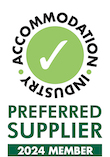Deep Cleaning the Shared Sections of Your Caravan Park in the Wake Of COVID-19
With cases of coronavirus rising across the globe, most public structures need to focus on adequate cleaning practices. This will be true even after the pandemic subsides.
People are more aware of hygiene standards, especially in public places like your caravan park.
Respiratory droplets (blood and mucus) contain germs that lead to sickness, and they may land on various structures. A cough produces about 3,000 droplets, which land on clothing, people, and nearby surfaces. COVID-19 spreads through contact with people and surfaces that have the coronavirus.
Shared spaces in your caravan park like restrooms, shared lounges and shared bathrooms are likely to boost the spread of the virus.
The following information is essential for deep cleaning communal sections in your facility.
 Photo by: cottonbro from Pexels
Photo by: cottonbro from Pexels
How to Decontaminate the Different Sections of Your Facility
Common Kitchen Area
 Image Source: Torquay Holiday Park
Image Source: Torquay Holiday Park
Common kitchen areas are bacteria and virus hot spots due to high traffic. You should, therefore, sanitize them regularly.
Start by cleaning to remove dirt and micro-organisms hiding in the grime. Clean commonly used surfaces such as kitchen counters, refrigerator door handles, cutting boards, stove dials and food processors. You should use industrial disinfectants and water when cleaning.
After cleaning, you can sanitize using chlorine or quaternary ammonium sanitizers.
Ensure you use the right concentrations and allow adequate dwell time. Dwell time is the amount of time that a sanitizer or disinfectant must remain wet and in contact with the surface, in order to achieve the product's advertised kill rate.
Read the product’s instructions to know how long the dwell time should be for the particular cleaning agent you’re using.
You and your janitors should wear gloves and masks when decontaminating common kitchen spaces. You should also wash your hands with soap and water after the job is done.
Shared Showers
 Photo by: Ingo Hamm on Unsplash
Photo by: Ingo Hamm on Unsplash
Public bathrooms are bacterial and viral breeding grounds and avenues for cross-contamination.
Your BSCs (building service contractors) and hygiene departments should focus on deeply sanitizing shared bathrooms. Begin by training employees on the proper cleaning and sanitizing procedures.
Focus on the bathroom floor, sinks, showerheads and faucets during this process.
For tiled bathrooms, remove dirt and germs from the grout through regular scrubbing. Use chlorine or iodine bleach to sanitize the area after cleaning. Keep your gloves on and use a firm-bristled brush when applying the disinfecting product in each area.
Allow the bathroom cleaner to settle for a few minutes before scrubbing and rinsing.
Do not forget to clean your shower heads since they may hold bacteria such as Mycobacterium avium, which causes pulmonary diseases like tuberculosis.
Immerse the showerhead in a plastic bag that has a chlorine-based sanitizer and let the showerhead soak for 24 hours before rinsing.
Spray the floors with a sanitizing compound and open the bathroom door and window for a faster drying process.
Shared Toilets
 Image by: myjanitors by Pixabay
Image by: myjanitors by Pixabay
Research conducted in China shows that some COVID-19 patients may have live viruses in their excrement. Add to this all the surfaces that users touch like door handles, toilet flush handles, toilet seats, and faucets, and you start to see why shared toilets are a hotspot for viruses and bacteria.
When disinfecting, instruct your workers to begin by sprinkling or squirting a disinfectant on the sides of the toilet bowls and then letting it settle for several minutes.
The janitors should then scrub the interior and exterior of the bowl before flushing the toilet.
You can use QUAT-based sanitizers or hydrogen peroxide to disinfect your toilet. Ensure you do not mix the disinfectants.
Attach spray nozzles on a bottle holding the sanitizer and spray it on the interior and exterior of the toilet bowl. Allow the disinfecting compound to stay on the bowl for 30 minutes for improved efficiency in destroying bacteria and viruses. Wipe the seat clean using paper towels until it's dry to reduce the survival of germs.
You and your team should also sanitize the door handles and flush handles regularly to prevent the spread of germs. Put a notice that instructs people to flush the toilet when the lid is closed to avoid pathogens splashing onto other surfaces.
Shared Lounges and TV Rooms
 Image Source: Torquay Holiday Park
Image Source: Torquay Holiday Park
Start by removing the clutter and dusting the wall-corners and ceiling of your TV room.
Proceed to clean all photographs, art and ceiling fans in the lounge. Takedown all the light fixtures and wash and dry them. Then remove the curtains, draperies and blinds for washing according to the manufacturer's instructions. You should then vacuum couch crevices, corners and windowsills.
You will also need to deep clean the carpets, rugs and doormats. There are various methods to properly clean your carpets.
You can now start sanitizing every inch of your lounge. Use iodine or chlorine-based sanitizers and scrub all the surfaces you had cleaned using the detergent. Use disinfectants when cleaning the floors and wipe all areas after completion.
Disinfect shared lounges regularly to prevent the build-up of bacteria and viruses.
Disinfecting Your Facility's Garbage Bins
 Image by: robinsonk26 from Pixabay
Image by: robinsonk26 from Pixabay
Garbage bins may have about 400 micro-organisms breeding and living on the surface. Inadequate disinfecting will expose your facility to disease-causing organisms like Coronavirus, Salmonella, E. coli and so on. Dirty garbage bins also have an unpleasant smell and appearance.
 Photo by: Vladislav Vasnetsov from Pexels
Photo by: Vladislav Vasnetsov from Pexels
When disinfecting your trash can, start by providing your employees with the necessary personal protective equipment. These include heavy-duty rubber gloves, face masks, protective suits and shoes.
Provide effective cleaning and sanitizing supplies as well.
Empty the can in the appropriate location before rinsing the container with soapy water. Fill the trash can with warm water to a quarter of its capacity then add an ammonia-based disinfectant. Allow ammonia to sit for about 30 minutes without mixing.
Proceed to scrub all parts of the garbage can, including the lid. Empty the container after completion and allow it to dry entirely before using it.
Keep Your Caravan Park Clean and Safe
Shared showers, lounges, toilets and garbage bins provide a breeding ground for bacteria and viruses. Proper disinfection of these areas will reduce the spread of disease-causing germs.
Ensure all high-contact areas such as kitchens, lounges and restrooms are regularly sanitized to prevent spreading infections. Filters and canopies in your kitchen area should also undergo regular sanitizing to remove grease and dirt, which hold harmful bacteria.
You may opt for chlorine or quaternary ammonium-based disinfectants when cleaning surfaces in your facility. Quaternary ammonium-based solutions are the more cost-effective option. Ensure you always use the right concentrations to get a deep clean.
And most importantly, wash your hands properly and regularly.
Watch this video to learn the World Health Organization recommended procedure.
Source: Martyn Wright


 Image by:
Image by: 












